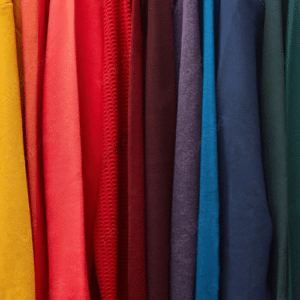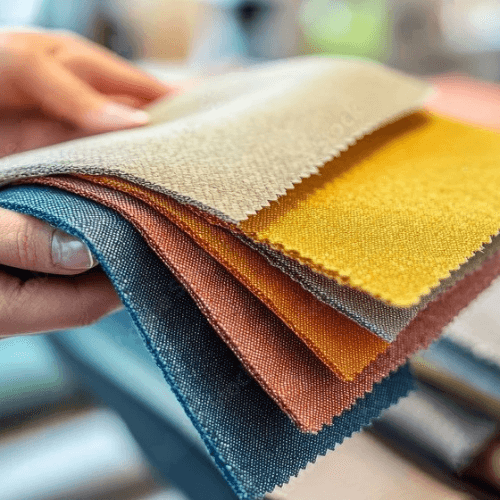Mastering Fabric Sourcing: Your Complete 2025 Guide

In the ever-evolving world of fashion and textiles, mastering fabric sourcing is crucial for brands aiming to stay competitive and sustainable. As consumer preferences shift towards eco-friendly practices and transparency, understanding the nuances of fabric sourcing has become more important than ever. This guide will provide you with essential strategies, insights into current trends, and practical tips to enhance your fabric sourcing process in 2025.
The Importance of Fabric Sourcing
Fabric sourcing is not merely about acquiring materials; it plays a vital role in defining a brand’s identity and quality. The right fabric can elevate a product, ensuring it meets customer expectations while aligning with sustainability goals. Here are some reasons why effective fabric sourcing is critical:
– Quality Control : The quality of the fabric directly impacts the final product. Poor-quality materials can lead to dissatisfied customers and returns.
– Cost Efficiency : Strategic sourcing can help brands manage costs effectively while maintaining quality standards.
– Sustainability : As consumers demand more sustainable products, brands must source eco-friendly fabrics that minimize environmental impact.
Key Strategies for Effective Fabric Sourcing
1. Research and Identify Suppliers
The first step in mastering fabric sourcing is to identify reliable suppliers. Conduct thorough research to find suppliers who specialize in the types of fabrics you need. Consider attending textile trade shows, using online directories, and leveraging industry contacts to discover potential partners.
2.Evaluate Supplier Capabilities
Once you’ve identified potential suppliers, assess their capabilities. Look for suppliers who can meet your specific requirements in terms of quality, quantity, and delivery timelines. Request samples to evaluate the fabric quality firsthand and ensure it aligns with your brand’s standards.
3.Build Strong Relationships
Developing strong relationships with suppliers is essential for successful fabric sourcing. Open communication fosters trust and collaboration, making it easier to negotiate terms and address any issues that may arise during production. Regularly engage with your suppliers to stay informed about new materials and innovations.
4. Focus on Sustainability
Sustainability is no longer just a trend; it’s a necessity in today’s fashion industry. Prioritize suppliers who offer sustainable fabrics made from organic or recycled materials. Implementing sustainable practices not only enhances your brand’s reputation but also meets consumer demand for eco-friendly products.
5.Stay Informed About Market Trends
The textile industry is constantly evolving, with new trends emerging regularly. Stay updated on market trends by following industry publications, attending webinars, and participating in networking events. Understanding current trends will help you make informed decisions about fabric choices that resonate with consumers.
6.Leverage Technology
Incorporating technology into your sourcing process can streamline operations and improve efficiency. Use software solutions for inventory management, supplier communication, and order tracking. Technology can help you maintain accurate records and ensure timely deliveries.
7.Implement Quality Control Measures
Establishing robust quality control measures is crucial for maintaining high standards in your products. Inspect fabrics upon arrival to ensure they meet your specifications before moving forward with production. Regular audits of supplier practices can also help ensure consistent quality over time.
8.Negotiate Terms Effectively
Negotiation is a key component of successful fabric sourcing. Be clear about your expectations regarding pricing, minimum order quantities (MOQs), and delivery schedules. Aim for mutually beneficial agreements that foster long-term partnerships rather than one-time transactions.
9.Diversify Your Supplier Base
Relying on a single supplier can pose risks to your supply chain stability. Diversify your supplier base to mitigate potential disruptions caused by unforeseen events such as natural disasters or political changes. Having multiple sources for your fabrics ensures that you can adapt quickly if needed.
10.Monitor Supply Chain Performance
Regularly monitor the performance of your supply chain to identify areas for improvement. Analyze metrics such as lead times, order accuracy, and supplier reliability to optimize your sourcing strategy continually.
Current Trends Influencing Fabric Sourcing
As we move into 2025, several trends are shaping the landscape of fabric sourcing:
– Circular Fashion : The concept of circular fashion emphasizes reducing waste by reusing materials and promoting recycling initiatives within the industry.
– Digital Fabric Sampling : Advances in technology have led to digital fabric sampling solutions that allow designers to visualize fabrics without physical samples, saving time and resources.
– Consumer Transparency : Brands are increasingly expected to provide transparency about their sourcing practices and material origins as consumers become more conscious of ethical production methods.
– Smart Fabrics : The rise of smart textiles—fabrics embedded with technology—offers exciting opportunities for innovation in garment functionality and performance.
Conclusion
Mastering fabric sourcing is essential for brands looking to thrive in the competitive fashion landscape of 2025. By implementing strategic sourcing practices that prioritize quality, sustainability, and strong supplier relationships, brands can enhance their product offerings while meeting consumer demands for transparency and responsibility.
As you navigate the complexities of fabric sourcing, remember that staying informed about market trends and leveraging technology will empower you to make decisions that drive success in your business. By adopting these strategies today, you’ll be well-equipped to face the challenges of tomorrow’s textile industry.







